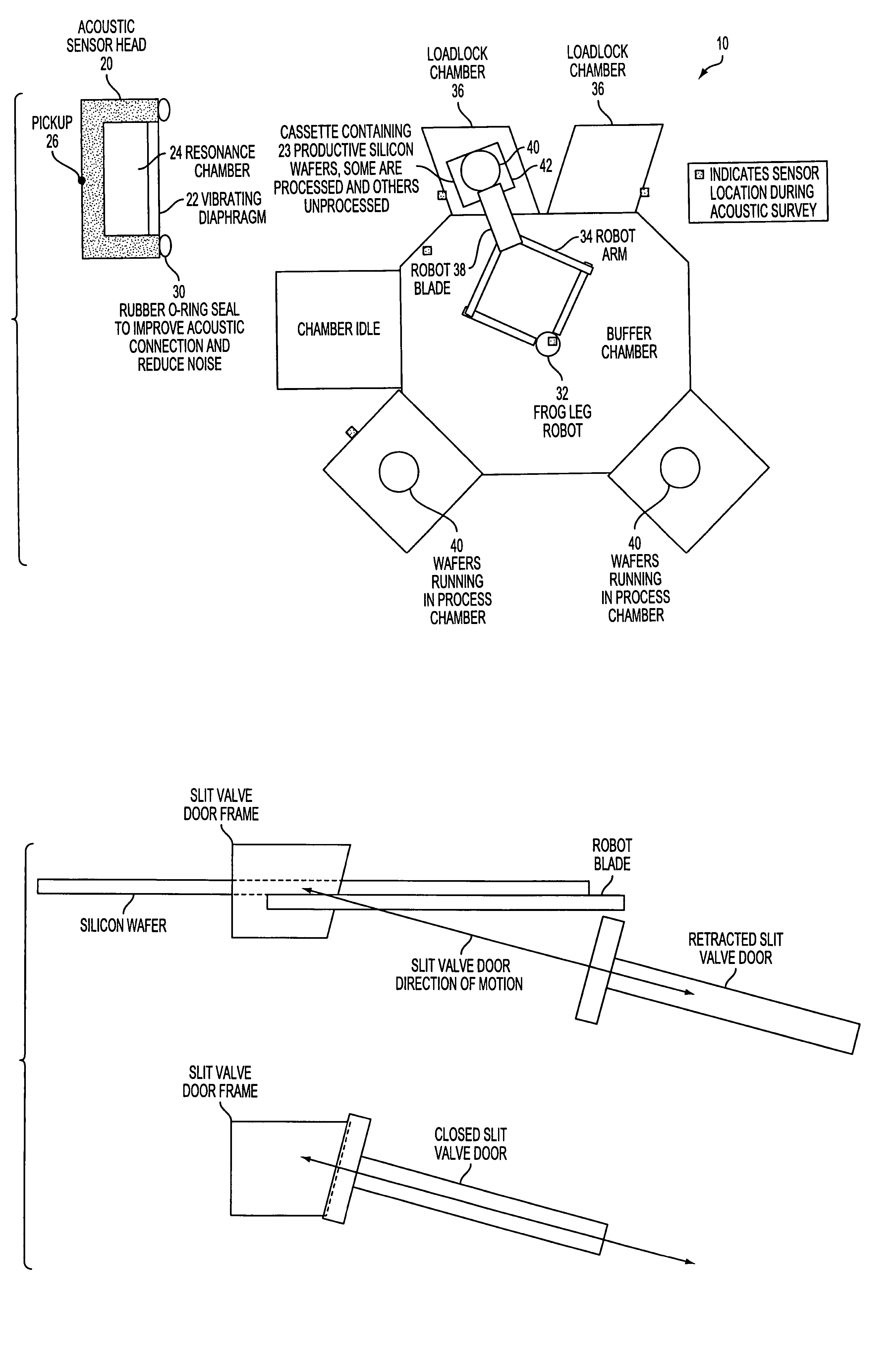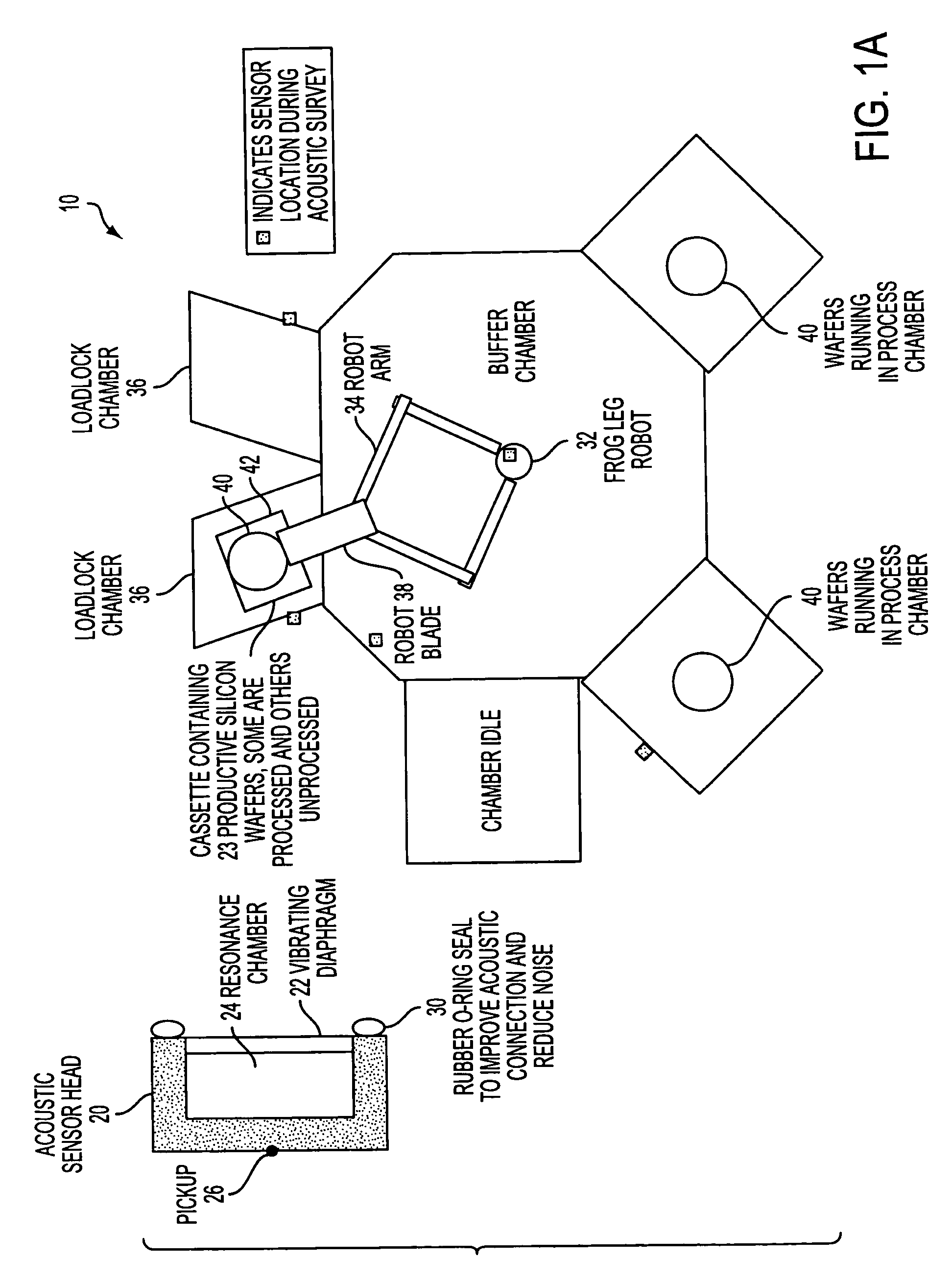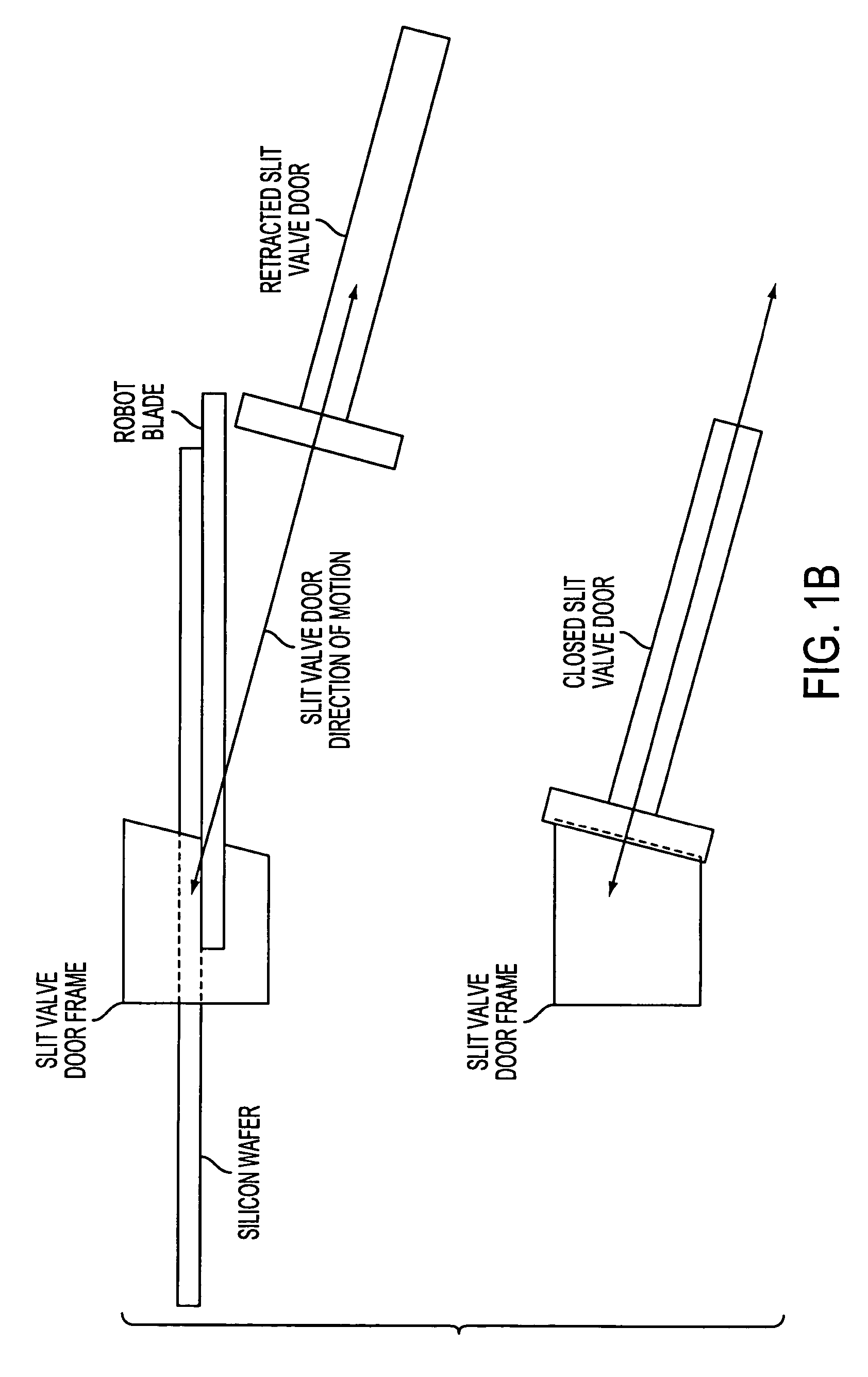Acoustic detection of mechanically induced circuit damage
a technology of induced circuit damage and acoustic detection, which is applied in the testing/measurement of individual semiconductor devices, semiconductor/solid-state devices, instruments, etc., can solve problems such as scratching from manufacturing or handling equipment, defects of ic patterns on silicon wafers, and process of semiconductors under non-typical environmental conditions
- Summary
- Abstract
- Description
- Claims
- Application Information
AI Technical Summary
Benefits of technology
Problems solved by technology
Method used
Image
Examples
Embodiment Construction
[0022]Reference will now be made in detail to the aspects of the present invention, examples of which are illustrated in the accompanying drawings, wherein like reference numerals refer to like elements throughout. The aspects are described below in order to explain the present invention by referring to the figures.
[0023]FIG. 1A is a diagram illustrating a system architecture using acoustic emission transducers 20 to detect an in-situ failure of mechanical components of a semiconductor processing equipment 10 to significantly reduce damage done to circuit patterns on semiconductor products and limit manufacturing costs and limit significant yield loss, in accordance with an aspect of the present invention. In-situ is defined as inspecting in real-time the semiconductor produce during the manufacturing / handling processing of the semiconductor product, that is, during a time where the manufacturing / handling processing of the semiconductor product occurs.
[0024]According to an aspect of...
PUM
| Property | Measurement | Unit |
|---|---|---|
| processing | aaaaa | aaaaa |
| current | aaaaa | aaaaa |
| conducting | aaaaa | aaaaa |
Abstract
Description
Claims
Application Information
 Login to View More
Login to View More - R&D
- Intellectual Property
- Life Sciences
- Materials
- Tech Scout
- Unparalleled Data Quality
- Higher Quality Content
- 60% Fewer Hallucinations
Browse by: Latest US Patents, China's latest patents, Technical Efficacy Thesaurus, Application Domain, Technology Topic, Popular Technical Reports.
© 2025 PatSnap. All rights reserved.Legal|Privacy policy|Modern Slavery Act Transparency Statement|Sitemap|About US| Contact US: help@patsnap.com



